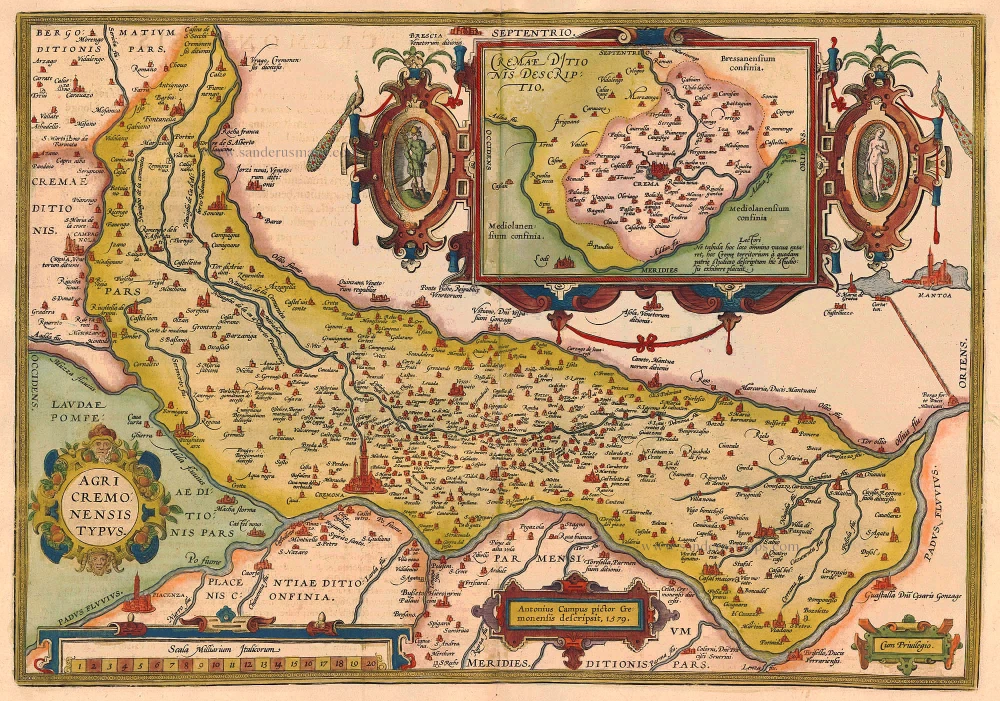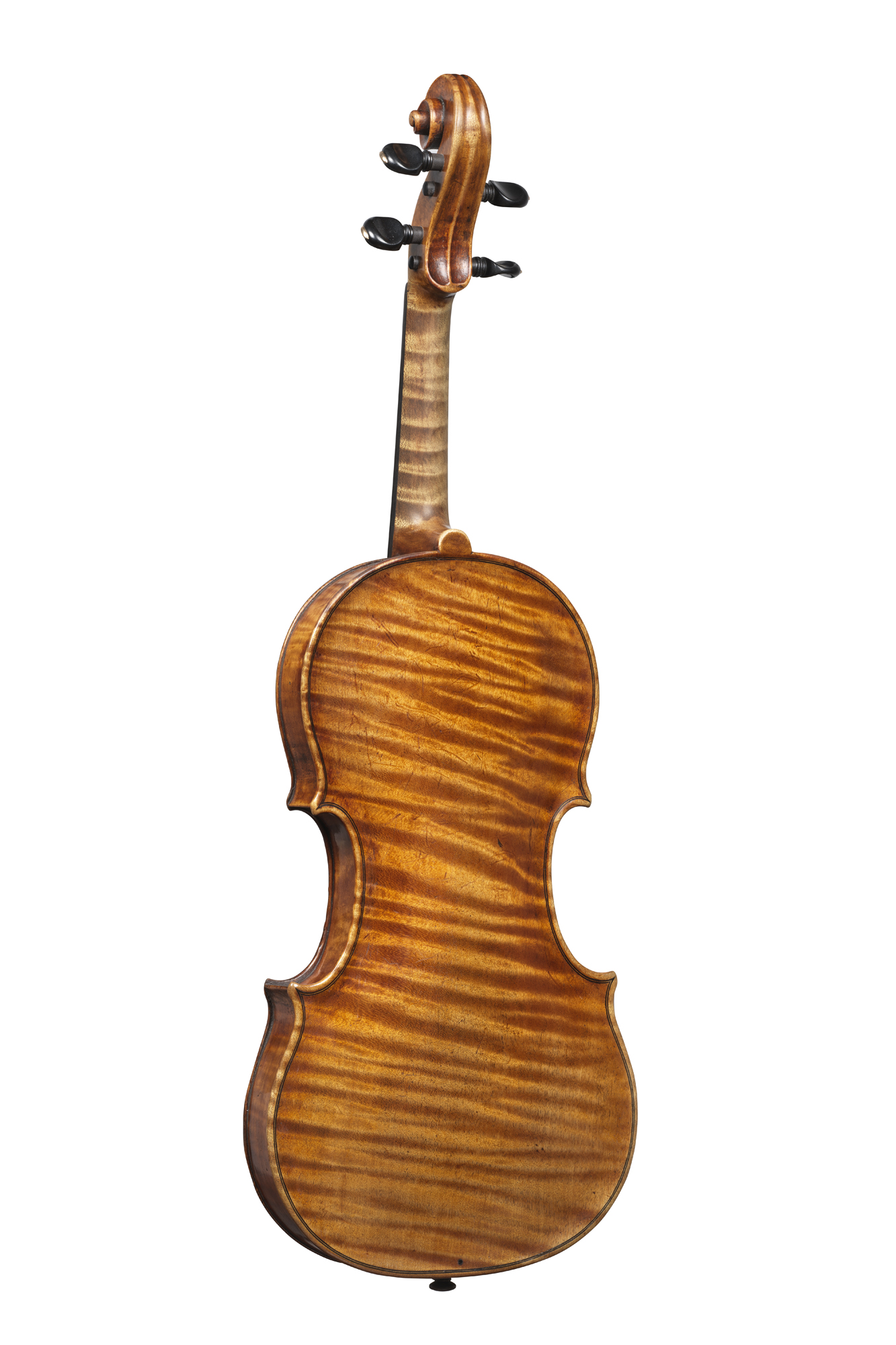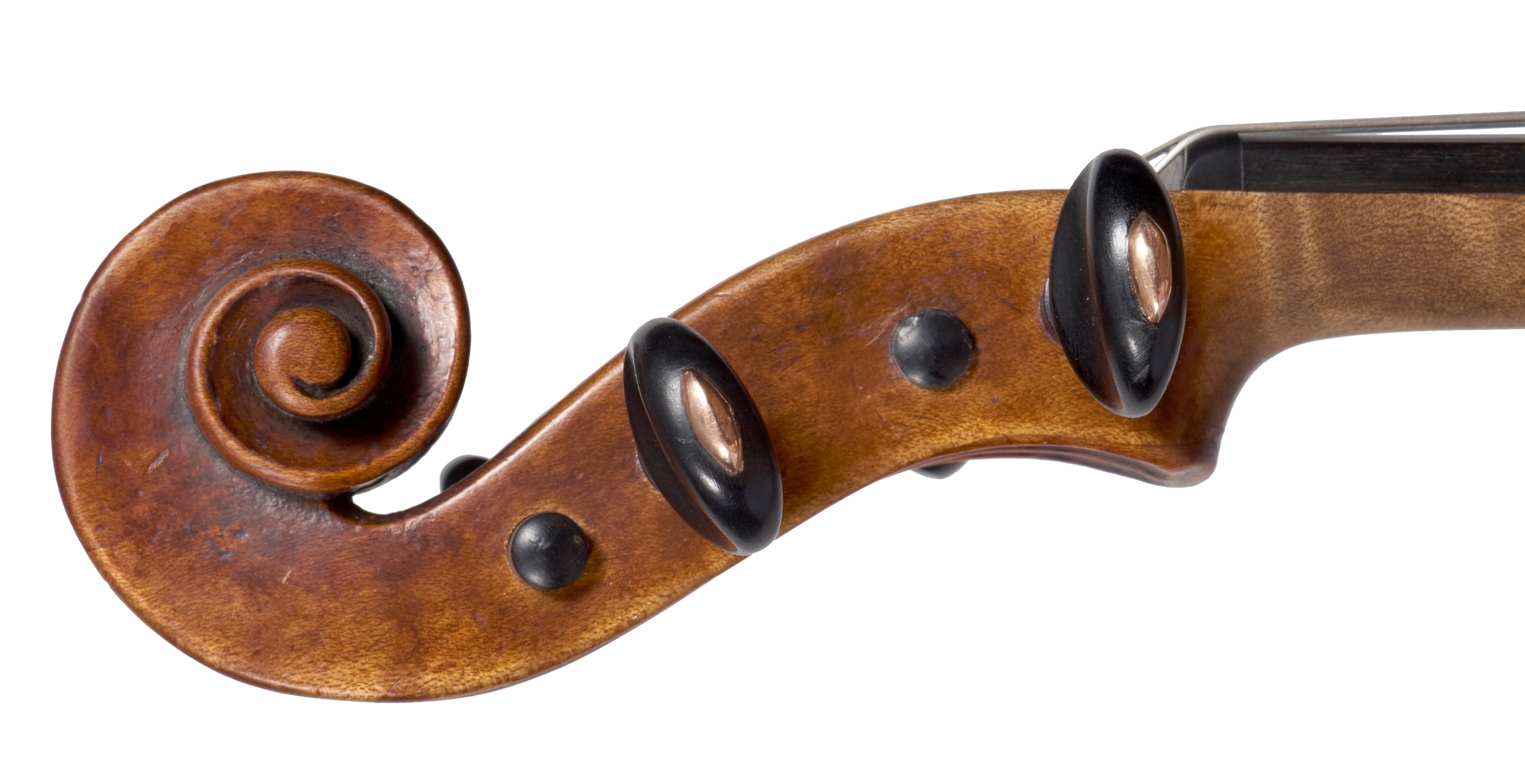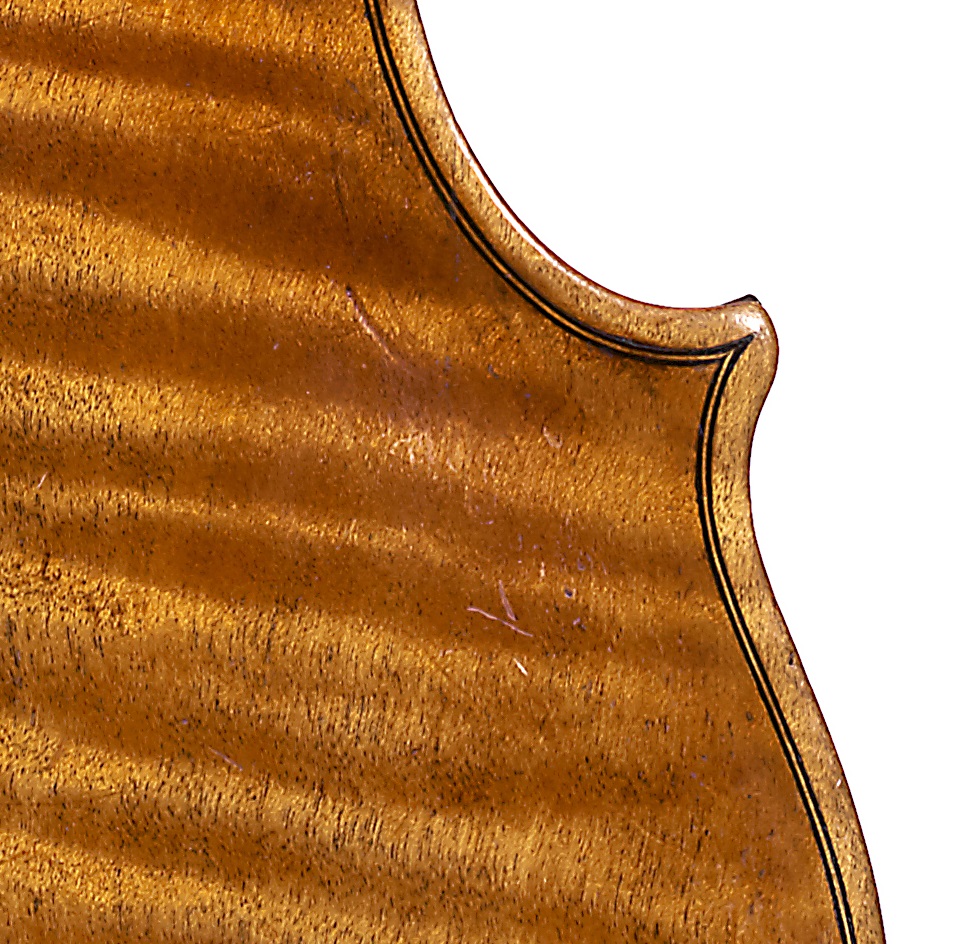Flames of Pure Gold
John Dilworth examines a late work of the Brothers Amati, made in collaboration with their son, Nicolò.
Although this violin bears a facsimile label of Nicolò Amati dated 1632, it appears to be a slightly earlier work of the type attributed to the brothers Antonio and Girolamo, but showing signs of the contribution of Girolamo’s son Nicolò. It is of the typical smaller model of that period, predating the ‘Grand Amati’ pattern introduced by Nicolò in the 1640s. By this period, Antonio, the elder of the brothers, had retired from the partnership, so the dominant hand is that of Girolamo, who himself died during the plague of 1630.


The back is made of a single piece of quarter-sawn maple with a beautiful regular flame descending quite steeply from left to right, with a finely carved rounded arch terminating in a subtle flute around the edge. The flames of the wood have rippled the surface slightly, providing a dramatic background to the glorious golden varnish. Although much of the varnish surface is rubbed and polished, areas of the ribs show the original deeper texture and stratification of the varnish layers. The ribs themselves are of well-figured slab-sawn maple.
The scroll is typically finely cut, also from slab-sawn maple, with perfectly graduated turns to the eye and a strong, evenly cut chamfer. Nicolò’s scrolls tend to have a more open appearance to the turns, and a diminishing chamfer close to the eye. Nevertheless, the fluting of the front surface extends a little further toward the throat than is usual for Girolamo, and may offer the evidence of Nicolò’s participation. The two-piece front has quite broad grain in the centre, with bands of fine width at the flanks, and an area of hazel figure beneath the tailpiece. The soundholes are perfectly characteristic of Girolamo, with the lower wings slightly tapered, and gently fluted.

The flames of the wood have rippled the surface slightly, providing a dramatic background to the glorious golden varnish.

The scroll is typically finely cut, also from slab-sawn maple, with perfectly graduated turns to the eye and a strong, evenly cut chamfer. Nicolò’s scrolls tend to have a more open appearance to the turns, and a diminishing chamfer close to the eye. Nevertheless, the fluting of the front surface extends a little further toward the throat than is usual for Girolamo, and may offer the evidence of Nicolò’s participation. The two-piece front has quite broad grain in the centre, with bands of fine width at the flanks, and an area of hazel figure beneath the tailpiece. The soundholes are perfectly characteristic of Girolamo, with the lower wings slightly tapered, and gently fluted.
The scroll is typically finely cut, also from slab-sawn maple, with perfectly graduated turns to the eye and a strong, evenly cut chamfer.

The purfling is most representative of Girolamo, with the long mitres swept quite strongly across the relatively broad corners. Although Amati craftsmanship is generally of the highest order, in his work there are often minor slips and irregularities of purfling, and in this case the mitres are not all perfectly aligned. Another characteristic of Amati purfling is the deeply stained black strips, which give a very close approximation to ebony. Locating pins are placed well within the purfling border. The Amatis were not concerned about hiding these small constructional features; Stradivari later took pains to conceal them, at least partly, beneath the purfling itself. Although the interior work has been altered a little, a small pin in the centre of the back is clearly visible, another characteristic of the Amati family and their pupils, and a clue to their working technique.
The delicacy and care with which these instruments were made four hundred years ago is always profoundly affecting, and is the key to their durability. They were made to meet the demands of music and the test of time, and with the utmost concern for simple beauty.
Recent Posts
Categories
- Feature Type
- Instrument Type
-
Maker
- Albani, Mathias (2)
- Amati, Andrea (8)
- Amati, Antonio & Girolamo (6)
- Amati, Girolamo II (6)
- Amati, Nicolò (6)
- Balestrieri, Tommaso (3)
- Banks, Benjamin (1)
- Bazin, Charles Nicolas (1)
- Bergonzi Family (1)
- Bergonzi, Carlo (2)
- Bergonzi, Michele Angelo (2)
- Bernardel, Auguste Sébastien Philippe (2)
- Bisiach, Leandro (2)
- Bultitude, Arthur Richard (1)
- Bussetto, Giovanni Maria del (1)
- Camilli, Camillo (2)
- Cappa, Gioffredo (2)
- Carcassi, Lorenzo & Tomaso (1)
- Ceruti, Giovanni Battista (3)
- Chanot, George Adolph (1)
- Cuypers, Johannes Theodorus (1)
- Dalla Costa, Pietro Antonio (1)
- Deconet, Michele (1)
- Fendt, Bernard Simon II (1)
- Fendt, Bernhard Simon I (1)
- Gabrielli, Giovanni Battista (1)
- Gagliano, Alessandro (2)
- Gagliano, Ferdinando (1)
- Genova, Giovanni Battista (1)
- Gisalberti, Andrea (1)
- Goffriller, Francesco (1)
- Goffriller, Matteo (1)
- Grancino, Giovanni (4)
- Grancino, Giovanni Battista II (1)
- Guadagnini, Gaetano II (1)
- Guadagnini, Giovanni Battista (7)
- Guarneri 'filius Andreæ', Giuseppe (3)
- Guarneri del Gesù, Giuseppe (5)
- Guarneri of Mantua, Pietro Giovanni (2)
- Guarneri of Venice, Pietro (3)
- Guarneri, Andrea (3)
- Götz, Conrad (1)
- Hill & Sons, W.E. (1)
- Kennedy, Thomas (1)
- Knopf, Carl Heinrich (1)
- Landolfi, Carlo Ferdinando (1)
- Lott, John Frederick (1)
- Lupot, Nicolas (2)
- Mantegazza, Pietro Giovanni (2)
- Mariani, Antonio (1)
- Montagnana, Domenico (2)
- Panormo, Vincenzo Trusiano (1)
- Parker, Daniel (1)
- Peccatte, Dominique (1)
- Platner, Michele (1)
- Pressenda, Giovanni Francesco (1)
- Rayman, Jacob (1)
- Retford, William Charles (1)
- Rivolta, Giacomo (1)
- Rocca, Giuseppe Antonio (2)
- Rota, Giovanni (1)
- Rugeri, Francesco (3)
- Sartory, Eugène (1)
- Scarampella, Stefano (2)
- Schwartz, George Frédéric (1)
- Serafin, Santo (1)
- Sgarabotto, Gaetano (1)
- Sgarabotto, Pietro (1)
- Simon, Pierre (1)
- Stainer, Jacob (3)
- Storioni, Lorenzo (3)
- Stradivari, Antonio (14)
- Stradivari, Francesco (1)
- Stradivari, Omobono (1)
- Tadioli, Maurizio (1)
- Taylor, Michael (1)
- Tecchler, David (2)
- Testore, Carlo Giuseppe (1)
- Tourte, François Xavier (4)
- Tubbs, James (1)
- Voller Brothers (1)
- Vuillaume, Jean-Baptiste (10)
- Watson, William (1)
- da Salò Bertolotti, Gasparo (2)
- Author
- Charity
-
In the Press
- Antiques Trade Gazette (3)
- Archi-magazine.it (1)
- Art Daily (2)
- CNN Style (1)
- Classic FM (2)
- ITV (1)
- Ingles & Hayday (4)
- Liberation (1)
- Life Style Journal (1)
- London Evening Standard (1)
- Paul Fraser Collectibles (1)
- Rhinegold Publishing (1)
- Sotheby's (1)
- Strings Magazine (2)
- Tarisio (2)
- The Fine Art Post (1)
- The Strad (7)
- The Times (1)
